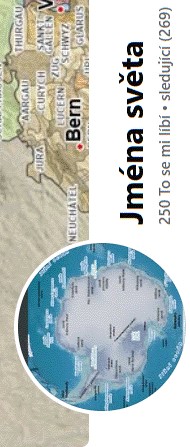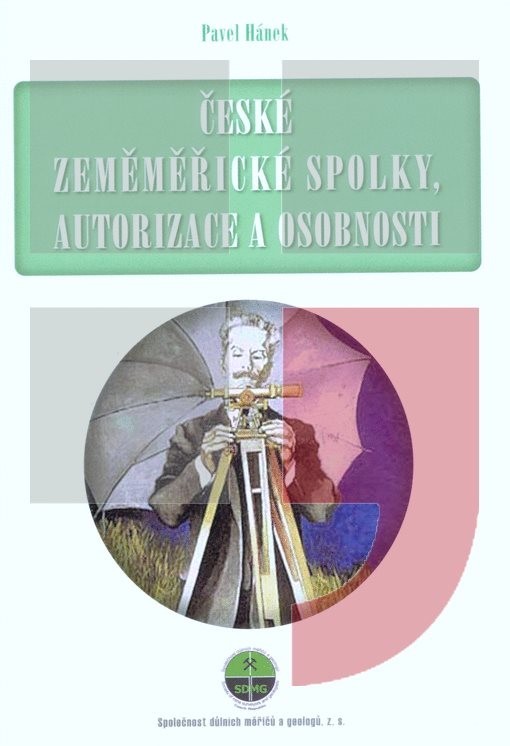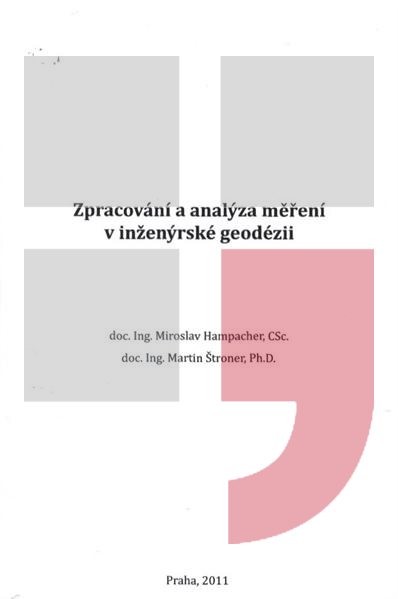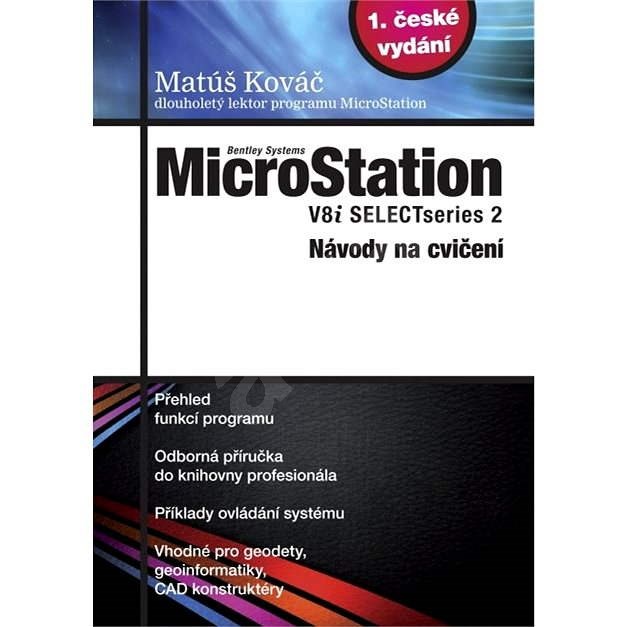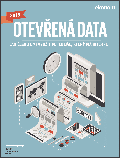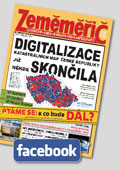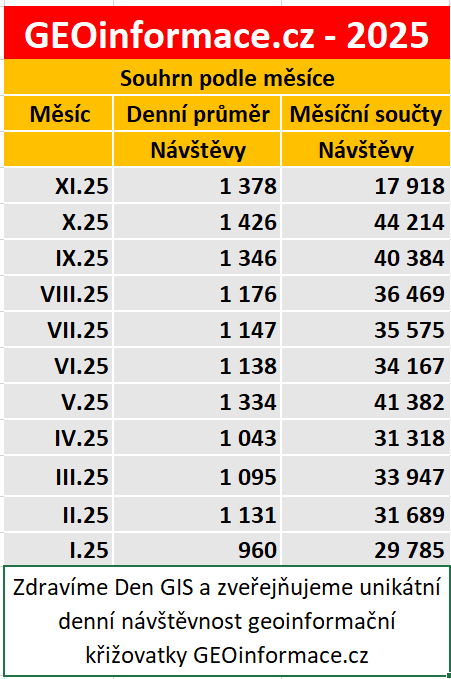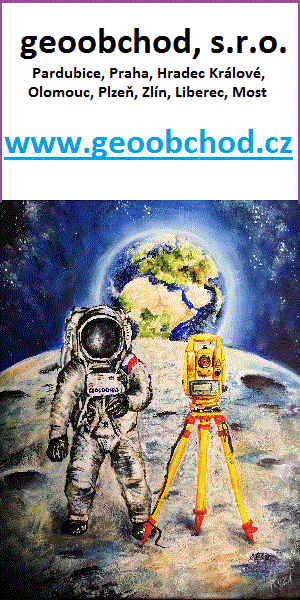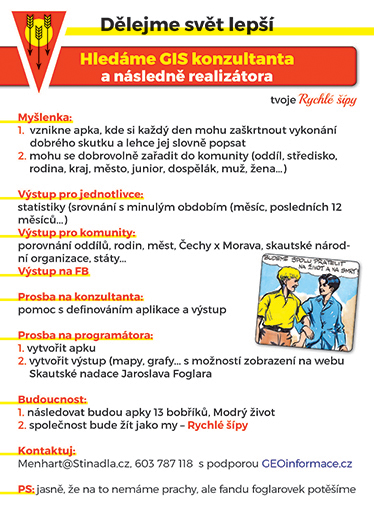zprávy
zdroje zpráv:Aktualizace Data250
17.5.2024 7:00 ČÚZK - Geoportál Aktualizace Data250Produkt Data250 (digitální geografický model území ČR, odpovídající přesností a stupněm generalizace měřítku
1 : 250 000 byl aktualizován, včetně mapových služeb ArcGIS REST a WMS.
Současně byl aktualizován "Katalog DATA250" popisující poskytované vrstvy a
dokumenty pro kartografickou vizualizaci v prostředí ESRI ArcGIS Desktop ArcMap a ArcGIS Pro.
Datové soubory jsou poskytovány ke stažení bezplatně jako otevřená data.
Aktualizace Data250
17.5.2024 7:00 ČÚZK - Geoportál Aktualizace Data250Produkt Data250 (digitální geografický model území ČR, odpovídající přesností a stupněm generalizace měřítku
1 : 250 000 byl aktualizován, včetně mapových služeb ArcGIS REST a WMS.
Současně byl aktualizován "Katalog DATA250" popisující poskytované vrstvy a
dokumenty pro kartografickou vizualizaci v prostředí ESRI ArcGIS Desktop ArcMap a ArcGIS Pro.
Datové soubory jsou poskytovány ke stažení bezplatně jako otevřená data.
Aktualizace Data250
17.5.2024 7:00 ČÚZK - Geoportál Aktualizace Data250Produkt Data250 (digitální geografický model území ČR, odpovídající přesností a stupněm generalizace měřítku
1 : 250 000 byl aktualizován, včetně mapových služeb ArcGIS REST a WMS.
Současně byl aktualizován "Katalog DATA250" popisující poskytované vrstvy a
dokumenty pro kartografickou vizualizaci v prostředí ESRI ArcGIS Desktop ArcMap a ArcGIS Pro.
Datové soubory jsou poskytovány ke stažení bezplatně jako otevřená data.
Aktualizace Data250
17.5.2024 7:00 ČÚZK - Geoportál Aktualizace Data250Produkt Data250 (digitální geografický model území ČR, odpovídající přesností a stupněm generalizace měřítku
1 : 250 000 byl aktualizován, včetně mapových služeb ArcGIS REST a WMS.
Současně byl aktualizován "Katalog DATA250" popisující poskytované vrstvy a
dokumenty pro kartografickou vizualizaci v prostředí ESRI ArcGIS Desktop ArcMap a ArcGIS Pro.
Datové soubory jsou poskytovány ke stažení bezplatně jako otevřená data.
Aktualizace Data250
17.5.2024 7:00 ČÚZK - Geoportál Aktualizace Data250Produkt Data250 (digitální geografický model území ČR, odpovídající přesností a stupněm generalizace měřítku
1 : 250 000 byl aktualizován, včetně mapových služeb ArcGIS REST a WMS.
Současně byl aktualizován "Katalog DATA250" popisující poskytované vrstvy a
dokumenty pro kartografickou vizualizaci v prostředí ESRI ArcGIS Desktop ArcMap a ArcGIS Pro.
Datové soubory jsou poskytovány ke stažení bezplatně jako otevřená data.
Aktualizace Data250
17.5.2024 7:00 ČÚZK - Geoportál Aktualizace Data250Produkt Data250 (digitální geografický model území ČR, odpovídající přesností a stupněm generalizace měřítku
1 : 250 000 byl aktualizován, včetně mapových služeb ArcGIS REST a WMS.
Současně byl aktualizován "Katalog DATA250" popisující poskytované vrstvy a
dokumenty pro kartografickou vizualizaci v prostředí ESRI ArcGIS Desktop ArcMap a ArcGIS Pro.
Datové soubory jsou poskytovány ke stažení bezplatně jako otevřená data.
Aktualizace Data250
17.5.2024 7:00 ČÚZK - Geoportál Aktualizace Data250Produkt Data250 (digitální geografický model území ČR, odpovídající přesností a stupněm generalizace měřítku
1 : 250 000 byl aktualizován, včetně mapových služeb ArcGIS REST a WMS.
Současně byl aktualizován "Katalog DATA250" popisující poskytované vrstvy a
dokumenty pro kartografickou vizualizaci v prostředí ESRI ArcGIS Desktop ArcMap a ArcGIS Pro.
Datové soubory jsou poskytovány ke stažení bezplatně jako otevřená data.
Aktualizace Data250
17.5.2024 7:00 ČÚZK - Geoportál Aktualizace Data250Produkt Data250 (digitální geografický model území ČR, odpovídající přesností a stupněm generalizace měřítku
1 : 250 000 byl aktualizován, včetně mapových služeb ArcGIS REST a WMS.
Současně byl aktualizován "Katalog DATA250" popisující poskytované vrstvy a
dokumenty pro kartografickou vizualizaci v prostředí ESRI ArcGIS Desktop ArcMap a ArcGIS Pro.
Datové soubory jsou poskytovány ke stažení bezplatně jako otevřená data.
Aktualizace Data250
17.5.2024 7:00 ČÚZK - Geoportál Aktualizace Data250Produkt Data250 (digitální geografický model území ČR, odpovídající přesností a stupněm generalizace měřítku
1 : 250 000 byl aktualizován, včetně mapových služeb ArcGIS REST a WMS.
Současně byl aktualizován "Katalog DATA250" popisující poskytované vrstvy a
dokumenty pro kartografickou vizualizaci v prostředí ESRI ArcGIS Desktop ArcMap a ArcGIS Pro.
Datové soubory jsou poskytovány ke stažení bezplatně jako otevřená data.
Aktualizace Data250
17.5.2024 7:00 ČÚZK - Geoportál Aktualizace Data250Produkt Data250 (digitální geografický model území ČR, odpovídající přesností a stupněm generalizace měřítku
1 : 250 000 byl aktualizován, včetně mapových služeb ArcGIS REST a WMS.
Současně byl aktualizován "Katalog DATA250" popisující poskytované vrstvy a
dokumenty pro kartografickou vizualizaci v prostředí ESRI ArcGIS Desktop ArcMap a ArcGIS Pro.
Datové soubory jsou poskytovány ke stažení bezplatně jako otevřená data.
Aktualizace Data250
17.5.2024 7:00 ČÚZK - Geoportál Aktualizace Data250Produkt Data250 (digitální geografický model území ČR, odpovídající přesností a stupněm generalizace měřítku
1 : 250 000 byl aktualizován, včetně mapových služeb ArcGIS REST a WMS.
Současně byl aktualizován "Katalog DATA250" popisující poskytované vrstvy a
dokumenty pro kartografickou vizualizaci v prostředí ESRI ArcGIS Desktop ArcMap a ArcGIS Pro.
Datové soubory jsou poskytovány ke stažení bezplatně jako otevřená data.
APGEO - Ing. Jindřich Jíra novým kmenovým členem APG
17.5.2024 2:00 Asociace podnikatelů v geomatice Novým kmenovým členem APG se stal Ing. Jindřich Jíra z Pelhřimova.Canada’s wildfire season begins
16.5.2024 14:15 ESA Observing the Earth
Wildfire season has arrived in full force in Canada, prompting evacuation orders and alerts in several towns in British Columbia and Alberta due to the danger of uncontrolled blazes.
Hazardous smoke from the fires has also triggered air quality alerts in Canada and the northern US. Satellite technology, including the Copernicus Sentinel-5P satellite and ESA’s Fire Atlas, plays a crucial role in monitoring these wildfires.
20240516_Odborný / vrchní referent oddělení právních vztahů k nemovitostem
16.5.2024 13:45 ČÚZK - předpisy a opatření Katastrální úřad pro Středočeský kraj - Katastrální pracoviště Kladno Vyhlášení výběrového řízení: Odborný / vrchní referent oddělení právních vztahů k nemovitostem V části "Úřední deska", v sekci "Oznámení a jiná úřední sdělení" bylo vystaveno "Oznámení o vyhlášení výběrového řízení na obsazení služebního místa Odborný / vrchní referent oddělení právních vztahů k nemovitostem"20240516_Odborný / vrchní referent oddělení právních vztahů k nemovitostem
16.5.2024 13:45 ČÚZK /Urady/Katastralni-urady/Katastralni-urady/Katastralni-urad-pro-Stredocesky-kraj/Katastralni-pracoviste/KP-Kladno/O-uradu/Aktuality/20210922_Odborny-referent-oddeleni-aktualizace-(4)Odborný / vrchní referent oddělení právních vztahů k nemovitostem
16.5.2024 13:44 ČÚZK - volná místa Katastrální úřad pro Středočeský kraj Katastrální pracoviště Kladno vypisuje výběrové řízení na místo Odborný / vrchní referent oddělení právních vztahů k nemovitostemOdborný / vrchní referent oddělení právních vztahů k nemovitostem
16.5.2024 13:44 ČÚZK - předpisy a opatření Katastrální úřad pro Středočeský kraj Katastrální pracoviště Kladnovypisuje výběrové řízení na místo
Odborný / vrchní referent oddělení právních vztahů k nemovitostem
Odborný / vrchní referent oddělení právních vztahů k nemovitostem
16.5.2024 13:44 ČÚZK /Urady/Katastralni-urady/Katastralni-urady/Katastralni-urad-pro-Stredocesky-kraj/Uredni-deska/Oznameni-a-jina-uredni-sdeleni/Volna-mista/DMS/Odborny-vrchni-referent-oddeleni-pravnich-vzta-(1)rada/ odborný rada – návrh zápisu, kontrola a zplatnění
16.5.2024 13:44 ČÚZK /Urady/Katastralni-urady/Katastralni-urady/Katastralni-urad-pro-hlavni-mesto-Prahu/O-uradu/Aktuality/rada-odborny-rada-–-navrh-zapisu,-kontrola-a-zplatrada/ odborný rada – návrh zápisu, kontrola a zplatnění
16.5.2024 13:44 ČÚZK - předpisy a opatření Katastrální úřad pro hlavní město Prahu zveřejnil novou aktualitu: Ředitelka úřadu vyhlašuje výběrové řízení na pozici:rada/ odborný rada – návrh zápisu, kontrola a zplatnění
rada/ odborný rada – návrh zápisu, kontrola a zplatnění
16.5.2024 13:42 ČÚZK - volná místa Katastrální úřad pro hlavní město Prahu vypisuje výběrové řízení na místo rada/ odborný rada – návrh zápisu, kontrola a zplatněnírada/ odborný rada – návrh zápisu, kontrola a zplatnění
16.5.2024 13:42 ČÚZK /Urady/Katastralni-urady/Katastralni-urady/Katastralni-urad-pro-hlavni-mesto-Prahu/Uredni-deska/Oznameni-a-jina-uredni-sdeleni/Volna-mista/rada-odborny-rada-–-navrh-zapisu,-kontrola-a-z-(3)rada/ odborný rada – návrh zápisu, kontrola a zplatnění
16.5.2024 13:42 ČÚZK - předpisy a opatření Katastrální úřad pro hlavní město Prahuvypisuje výběrové řízení na místo
rada/ odborný rada – návrh zápisu, kontrola a zplatnění
vrchní referent/rada – návrh zápisu, kontrola a zplatnění
16.5.2024 11:15 ČÚZK /Urady/Katastralni-urady/Katastralni-urady/Katastralni-urad-pro-hlavni-mesto-Prahu/O-uradu/Aktuality/vrchni-referent-rada-–-navrh-zapisu,-kontrola-(1)vrchní referent/rada – návrh zápisu, kontrola a zplatnění
16.5.2024 11:15 ČÚZK - předpisy a opatření Katastrální úřad pro hlavní město Prahu zveřejnil novou aktualitu: Ředitelka úřadu vyhlašuje výběrové řízení na pozici:vrchní referent/rada – návrh zápisu, kontrola a zplatnění
vrchní referent/rada – návrh zápisu, kontrola a zplatnění
16.5.2024 11:13 ČÚZK - volná místa Katastrální úřad pro hlavní město Prahu vypisuje výběrové řízení na místo vrchní referent/rada – návrh zápisu, kontrola a zplatněnívrchní referent/rada – návrh zápisu, kontrola a zplatnění
16.5.2024 11:13 ČÚZK /Urady/Katastralni-urady/Katastralni-urady/Katastralni-urad-pro-hlavni-mesto-Prahu/Uredni-deska/Oznameni-a-jina-uredni-sdeleni/Volna-mista/vrchni-referent-rada-–-navrh-zapisu,-kontrola-(1)vrchní referent/rada – návrh zápisu, kontrola a zplatnění
16.5.2024 11:13 ČÚZK - předpisy a opatření Katastrální úřad pro hlavní město Prahuvypisuje výběrové řízení na místo
vrchní referent/rada – návrh zápisu, kontrola a zplatnění
Nová dotační příležitost pro vaše firemní vzdělávání - NPO DIGI pro firmu
16.5.2024 10:56 Adeon
Přinášíme skvělou zprávu pro všechny firmy, které chtějí investovat do rozvoje digitálních dovedností svých zaměstnanců. Úřad práce ČR vyhlásil nový […]
The post Nová dotační příležitost pro vaše firemní vzdělávání - NPO DIGI pro firmu appeared first on Adeon CZ.
Nová dotační příležitost pro vaše firemní vzdělávání - NPO DIGI pro firmu
16.5.2024 10:56 AdeonPřinášíme skvělou zprávu pro všechny firmy, které chtějí investovat do rozvoje digitálních dovedností svých zaměstnanců. Úřad práce ČR vyhlásil nový […]
The post Nová dotační příležitost pro vaše firemní vzdělávání - NPO DIGI pro firmu appeared first on Adeon CZ.
Nová dotační příležitost pro vaše firemní vzdělávání - NPO DIGI pro firmu
16.5.2024 10:56 Adeon
Přinášíme skvělou zprávu pro všechny firmy, které chtějí investovat do rozvoje digitálních dovedností svých zaměstnanců. Úřad práce ČR vyhlásil nový […]
The post Nová dotační příležitost pro vaše firemní vzdělávání - NPO DIGI pro firmu appeared first on Adeon CZ.
20240516
16.5.2024 10:50 ČÚZK /Urady/Katastralni-urady/Katastralni-urady/Katastralni-urad-pro-Stredocesky-kraj/Katastralni-pracoviste/KP-Nymburk/O-uradu/Aktuality/20210412_Uprava-urednich-hodin-(1)20240516
16.5.2024 10:50 ČÚZK - předpisy a opatření Katastrální úřad pro Středočeský kraj - Katastrální pracoviště Nymburkzveřejnil novou aktualitu: Z důvodů dokončování prací a vyložení obnoveného operátu přepracováním k veřejnému nahlédnutí v katastrálním území Poděbrady\ - jižní část nebude možné v období od 10.5. 2024 do 25.6. 2024 provádět žádné zápisy do katastru.
Den s Wingtra LIDAR
16.5.2024 10:45 Geotronics Pozvánka na představení Wingtra LIDAR 5. 6. 2024 na Statku Benátky u Sázavy.Den s Wingtra LIDAR
16.5.2024 10:45 GeotronicsPozvánka na představení Wingtra LIDAR 5. 6. 2024 na Statku Benátky u Sázavy.
The post Den s Wingtra LIDAR first appeared on GEOTRONICS Praha.
Den s Wingtra LIDAR
16.5.2024 10:45 GeotronicsPozvánka na představení Wingtra LIDAR 5. 6. 2024 na Statku Benátky u Sázavy.
The post Den s Wingtra LIDAR first appeared on GEOTRONICS Praha.
Srdečně vás zveme na konferenci CADfórum 2024 na Slovensku
16.5.2024 10:25 Arkance Systems2. ročník konference CADfórum na Slovensku: 11. 6. 2024, hotel Senec v Senci. Nejnovější trendy a ARKANCE novinky.
Zpráva Srdečně vás zveme na konferenci CADfórum 2024 na Slovensku pochází z arkance-systems.cz.
Oznámení o uzavření katastrálního pracoviště
16.5.2024 9:30 ČÚZK /Urady/Katastralni-urady/Katastralni-urady/Katastralni-urad-pro-Kralovehradecky-kraj/Katastralni-pracoviste/KP-Jicin/O-uradu/Aktuality/Oznameni-o-uzavreni-katastralniho-pracovisteOznámení o uzavření katastrálního pracoviště
16.5.2024 9:30 ČÚZK - předpisy a opatření Katastrální úřad pro Královéhradecký kraj - Katastrální pracoviště Jičín zveřejnil novou aktualitu: Z důvodu plánovaného přerušení dodávky elektřiny bude dne 23. 5. 2024 budova Okresního soudu v Jičíně, ve které sídlí katastrální pracoviště, uzavřena pro veřejnost. Více informací v oznámeníOznámení o uzavření katastrálního pracoviště
16.5.2024 9:30 ČÚZK - předpisy a opatření Katastrální úřad pro Královéhradecký kraj - Katastrální pracoviště Jičín zveřejnil novou aktualitu: Z důvodu plánovaného přerušení dodávky elektřiny bude dne 23. 5. 2024 budova Okresního soudu v Jičíně, ve které sídlí katastrální pracoviště, uzavřena pro veřejnost. Více informací v oznámeníÚCL zveřejnilo aktualizované Opatření obecné povahy s usnadněním létání s drony v ČR
16.5.2024 8:13 UAVA Tento týden ÚCL zveřejnilo aktualizované Opatření obecné povahy (OOP) pro létání s drony v ČR. Mezi hlavní změny patří usnadnění létání v Otevřené kategorii pro létání v HOP pro drony pod 250g a se štítky C0 a C1. Celé znění doporučujeme přečíst zde: https://www.caa.cz/news/oop-omezeny-prostor-lkr10-uas-3/ Současně připravujeme webinář v červnu s ÚCL k bližšímu vysvětlení změn […]AO Škoda Octavia
15.5.2024 14:40 ČÚZK - předpisy a opatřeníKatastrální úřad pro Jihočeský kraj nabízí nepotřebný majetek k odkupu. Jedná se o
AO Škoda Octavia
AO Škoda Octavia
15.5.2024 14:40 ČÚZK /Urady/Katastralni-urady/Katastralni-urady/Katastralni-urad-pro-Jihocesky-kraj/Nabidky-majetku/AO-Skoda-OctaviaZveřejnění obsahu informací poskytnutých na žádost dle zákona č. 106/1999 Sb. za rok 2024
15.5.2024 13:41 ČÚZK - předpisy a opatření Zeměměřický a katastrální inspektorát v Prazezveřejňuje obsah informace poskytnutých na žádost dle zákona č. 106/1999 Sb. za rok
2024
Zveřejnění obsahu informací poskytnutých na žádost dle zákona č. 106/1999 Sb. za rok 2024
15.5.2024 13:41 ČÚZK /Urady/Zememericke-a-katastralni-inspektoraty/Zememericke-a-katastralni-inspektoraty/Zememericky-a-katastralni-inspektorat-v-Praze/Casto-hledane-informace/Poskytovani-informaci-106-1999-Sb/Zverejneni-obsahu-informaci-poskytnutych-na-za-(1)/Zverejneni-obsahu-informaci-poskytnutych-na-za-(8)OldMapsOnline s funkcí TimeMap
15.5.2024 12:52 Katedra geoinformatiky UP OlomoucPřipojte se k nám na veřejné spuštění nové generace aplikace OldMapsOnline s funkcí TimeMap pořádané David Rumsey Map Center. OldMapsOnline je aplikace, která umožňuje uživatelům objevovat minulost prostřednictvím více než jednoho milionu digitalizovaných starých map, které lze prohlížet ve 3D a dokonce i s rozšířenou realitou. Komponenta TimeMap v OldMapsOnline umožňuje uživatelům lépe pochopit historický […]
The post OldMapsOnline s funkcí TimeMap first appeared on Katedra geoinformatiky.
Odborný referent v oddělení právních vztahů k nemovitostem na Katastrálním pracoviště Hodonín
15.5.2024 10:30 ČÚZK - volná místa Katastrální úřad pro Jihomoravský kraj Katastrální pracoviště Hodonín vypisuje výběrové řízení na místo Odborný referent v oddělení právních vztahů k nemovitostem na Katastrálním pracoviště HodonínOdborný referent v oddělení právních vztahů k nemovitostem na Katastrálním pracoviště Hodonín
15.5.2024 10:30 ČÚZK - předpisy a opatření Katastrální úřad pro Jihomoravský kraj Katastrální pracoviště Hodonínvypisuje výběrové řízení na místo
Odborný referent v oddělení právních vztahů k nemovitostem na Katastrálním pracoviště Hodonín
Odborný referent v oddělení právních vztahů k nemovitostem na Katastrálním pracoviště Hodonín
15.5.2024 10:30 ČÚZK /Urady/Katastralni-urady/Katastralni-urady/Katastralni-urad-pro-Jihomoravsky-kraj/Uredni-deska/Oznameni-a-jina-uredni-sdeleni/Volna-mista/DMS/Odborny-referent-v-oddeleni-pravnich-vztahu-k-nemoÚspěchy našich studentů a nadějných mladých badatelů
15.5.2024 10:14 Katedra geoinformatiky UP OlomoucÚspěchy našich studentů a nadějných mladých badatelů! Pod vedením doktora Stanislava Popelky dosahují naši studenti vynikajících výsledků. Na Ceně děkana uspěl náš student CDE Joint Master Degree Ruchira, který svou prací ovládl celkovou magisterskou sekci a stal se i celkovým vítězem věd o Zemi. Gratulujeme k tomuto skvělému úspěchu! Naše katedra se pravidelně zapojuje do […]
The post Úspěchy našich studentů a nadějných mladých badatelů first appeared on Katedra geoinformatiky.
Nové číslo GaKO
15.5.2024 8:57
ÚGKK SR
Nové číslo časopisu Geodetického a Kartografického Obzoru 05/2024
Účetní
15.5.2024 8:35 ČÚZK /Urady/Katastralni-urady/Katastralni-urady/Katastralni-urad-pro-Moravskoslezsky-kraj/Volna-mista/DMS/UcetniÚčetní
15.5.2024 8:35 ČÚZK - předpisy a opatření Katastrální úřad pro Moravskoslezský kraj kancelář ředitelevypisuje výběrové řízení na místo
Účetní
Účetní
15.5.2024 8:35 ČÚZK - předpisy a opatření Katastrální úřad pro Moravskoslezský kraj - kancelář ředitelevypisuje výběrové řízení na místo
Účetní
Účetní
15.5.2024 8:35 ČÚZK - volná místa Katastrální úřad pro Moravskoslezský kraj kancelář ředitele vypisuje výběrové řízení na místo ÚčetníÚčetní
15.5.2024 8:35 ČÚZK - volná místa Katastrální úřad pro Moravskoslezský kraj - kancelář ředitele vypisuje výběrové řízení na místo ÚčetníUpozornění na omezení provozu telefonních linek
15.5.2024 8:03 ČÚZK /Urady/Katastralni-urady/Katastralni-urady/Katastralni-urad-pro-Pardubicky-kraj/Katastralni-pracoviste/KP-Svitavy/O-uradu/Aktuality/Upozorneni-na-omezeni-provozu-telefonnich-linekUpozornění na omezení provozu telefonních linek
15.5.2024 8:03 ČÚZK - předpisy a opatření Český úřad zeměměřický a katastrální - Katastrální pracoviště Svitavy Upozornění na omezení provozu telefonních linek na KP Svitavy Z důvodu instalace nové telefonní ústředny nebude v pátek 17. 5. 2024 od 8.30 funkční telefonní linka v budově katastrálního pracoviště. Děkujeme za pochopení.Oznámení o vyhlášení VŘ na služební místo rada - odborný rada
14.5.2024 15:15 ČÚZK - předpisy a opatření Zeměměřický a katastrální inspektorát v Praze zveřejnil novou aktualitu: Zeměměřický a katastrální inspektorát v Praze vyhlašuje výběrová řízení na služební místa Rada/Odborný rada inspektor (obor služby 55).Rada/odborný rada - inspektor ZKI v Praze
14.5.2024 15:14 ČÚZK - volná místa Zeměměřický a katastrální inspektorát v Praze vypisuje výběrové řízení na místo Rada/odborný rada - inspektor ZKI v PrazeRada/odborný rada - inspektor ZKI v Praze
14.5.2024 15:14 ČÚZK - předpisy a opatření Zeměměřický a katastrální inspektorát v Prazevypisuje výběrové řízení na místo
Rada/odborný rada - inspektor ZKI v Praze
Rada/odborný rada - inspektor ZKI v Praze
14.5.2024 15:14 ČÚZK /Urady/Zememericke-a-katastralni-inspektoraty/Zememericke-a-katastralni-inspektoraty/Zememericky-a-katastralni-inspektorat-v-Praze/Uredni-deska/Oznameni-a-jina-uredni-sdeleni/Volna-mista/DMS/Rada-odborny-rada-inspektor-ZKI-v-PrazeThe “openBIM-based Workflows and Exchanges for Electric Power Transmission and Distribution” Activity Proposal has been reviewed and endorsed by the Standards Committee.
14.5.2024 15:10 buildingSMART.orgReport: LinkOutcome report: Link The “openBIM for Transmission and Distribution” Activity Proposal has been reviewed and endorsed by the Standards Committee.The Standards Committee feedback and results can be viewed using…
The post The “openBIM-based Workflows and Exchanges for Electric Power Transmission and Distribution” Activity Proposal has been reviewed and endorsed by the Standards Committee. appeared first on buildingSMART International.
20240515 - volné místo - Rada/odborný rada v odd.právních vztahů KP Žatec na KÚ pro Ústecký kraj
14.5.2024 14:47 ČÚZK - předpisy a opatření Katastrální úřad pro Ústecký kraj - Katastrální pracoviště Žatec zveřejnil novou aktualitu: Nabídka volného místa - Rada / odborný rada v oddělení právních vztahů k nemovitostem Katastrálního pracoviště Žatec na Katastrálním úřadu pro Ústecký kraj20240515 - volné místo - Rada/odborný rada v odd.právních vztahů KP Žatec na KÚ pro Ústecký kraj
14.5.2024 14:47 ČÚZK /Urady/Katastralni-urady/Katastralni-urady/Katastralni-urad-pro-Ustecky-kraj/Katastralni-pracoviste/KP-Zatec/O-uradu/Aktuality/20240515-volne-misto-Rada-odborny-rada-v-odd-pravn20240515 - volné místo - Rada/odborný rada v odd.právních vztahů KP Žatec na KÚ pro Ústecký kraj
14.5.2024 14:46 ČÚZK /Urady/Katastralni-urady/Katastralni-urady/Katastralni-urad-pro-Ustecky-kraj/O-uradu/Aktuality/20240515-volne-misto-Rada-odborny-rada-v-odd-pravn20240515 - volné místo - Rada/odborný rada v odd.právních vztahů KP Žatec na KÚ pro Ústecký kraj
14.5.2024 14:46 ČÚZK - předpisy a opatření Katastrální úřad pro Ústecký kraj - Katastrální pracoviště Žatec zveřejnil novou aktualitu: Nabídka volného místa - Rada / odborný rada v oddělení právních vztahů k nemovitostem Katastrálního pracoviště Žatec na Katastrálním úřadu pro Ústecký krajRada / odborný rada v oddělení právních vztahů k nemovitostem Katastrálního pracoviště Žatec na Kata
14.5.2024 14:44 ČÚZK - předpisy a opatření Katastrální úřad pro Ústecký kraj Katastrální pracoviště Žatecvypisuje výběrové řízení na místo
Rada / odborný rada v oddělení právních vztahů k nemovitostem Katastrálního pracoviště Žatec na Katastrálním úřadu pro Ústecký kraj
Rada / odborný rada v oddělení právních vztahů k nemovitostem Katastrálního pracoviště Žatec na Kata
14.5.2024 14:44 ČÚZK - volná místa Katastrální úřad pro Ústecký kraj Katastrální pracoviště Žatec vypisuje výběrové řízení na místo Rada / odborný rada v oddělení právních vztahů k nemovitostem Katastrálního pracoviště Žatec na KataRada / odborný rada v oddělení právních vztahů k nemovitostem Katastrálního pracoviště Žatec na Kata
14.5.2024 14:44 ČÚZK /Urady/Katastralni-urady/Katastralni-urady/Katastralni-urad-pro-Ustecky-kraj/Uredni-deska/Oznameni-a-jina-uredni-sdeleni/Volna-mista/DMS/Rada-odborny-rada-v-oddeleni-pravnich-vztahu-k-nemodborný referent / vrchní referent v oddělení dokumentace katastru nemovitosti Katastrálního pracovi
14.5.2024 13:47 ČÚZK /Urady/Katastralni-urady/Katastralni-urady/Katastralni-urad-pro-Kralovehradecky-kraj/Uredni-deska/Oznameni-a-jina-uredni-sdeleni/Volna-mista/DMS/odborny-referent-vrchni-referent-v-oddeleni-dokumeodborný referent / vrchní referent v oddělení dokumentace katastru nemovitosti Katastrálního pracovi
14.5.2024 13:47 ČÚZK - předpisy a opatření Katastrální úřad pro Královéhradecký kraj Katastrální pracoviště Hradec Královévypisuje výběrové řízení na místo
odborný referent / vrchní referent v oddělení dokumentace katastru nemovitosti Katastrálního pracoviště Hradec Králové
odborný referent / vrchní referent v oddělení dokumentace katastru nemovitosti Katastrálního pracovi
14.5.2024 13:47 ČÚZK - volná místa Katastrální úřad pro Královéhradecký kraj Katastrální pracoviště Hradec Králové vypisuje výběrové řízení na místo odborný referent / vrchní referent v oddělení dokumentace katastru nemovitosti Katastrálního pracoviMapová aplikace ÚPD - nové dokumentace
14.5.2024 12:40 Jihočeský krajV mapové aplikaci Územně plánovací dokumentace obcí byla aktualizována ÚPD obcí ORP Blatná – Lnáře, ORP Milevsko – Jickovice, ORP Prachatice – Kratušín, ORP Č. Krumlov – Větřní.
Nová generace OldMapsOnline [Knihovna geografie, byTopic]
14.5.2024 11:10 Katedra aplikované geoinformatiky a kartografie Přf UKV květnovém čísle korejského Drone magazine vyšel rozhovor s prezidentem Aliance a představení českého drone industry
14.5.2024 11:06 UAVA V květnovém čísle korejského Drone magazine vyšel 6-ti stránkový rozhovor s prezidentem Aliance s představením českého drone industry. Navíc v následujících několika číslech bude představeno několik vybraných českých firem korejským čtenářům. Zde je online verze rozhovoru: https://www.kdrm.kr/news/articleView.html?idxno=49973920240514-Ocenění v kategorii Atlasy, soubory a edice map
14.5.2024 10:50 ČÚZK - předpisy a opatření Český úřad zeměměřický a katastrální zveřejnil novou aktualitu: Český úřad zeměměřický a katastrální obdržel v kategorii Atlasy, soubory a edice map ocenění MAPA ROKU 2023 za Základní topografické mapy České republiky.20240514-Ocenění v kategorii Atlasy, soubory a edice map
14.5.2024 10:50 ČÚZK /Aktuality-resort/2024/20240514-Oceneni-v-kategorii-Atlasy,-soubory-a-edi20240514-Ocenění v kategorii Atlasy, soubory a edice map
14.5.2024 10:50 ČÚZK - aktuality v resortu Český úřad zeměměřický a katastrální obdržel v kategorii Atlasy, soubory a edice map ocenění MAPA ROKU 2023 za Základní topografické mapy České republiky.Seminář Pozemkové úpravy XXVI., 2024
13.5.2024 22:58 Spolek zeměměřičů Brno Dne 30. května 2024 se uskutečnil seminář o pozemkových úpravách.Kde: Hotel Atom, Velkomeziříčská 640/45, Třebíč Program 8:00 – 9:00 Prezence účastníků9:00 – 14:30 Seminář a diskuse Přednášející Mgr. Martina Hercegová (Český úřad zeměměřický a katastrální)Pravidla pro tvorbu a dělení parcel Ing. Pavel Doubek (Český úřad zeměměřický a katastrální)Úloha komise při zjišťování průběhu... Read more »Seminář Pozemkové úpravy XXVI., 2024
13.5.2024 22:58 Spolek zeměměřičů Brno Dne 30. května 2024 se uskuteční seminář o pozemkových úpravách.Kde: Hotel Atom, Velkomeziříčská 640/45, Třebíč Program 8:00 – 9:00 Prezence účastníků9:00 – 14:30 Seminář a diskuse Přednášející Mgr. Martina Hercegová (Český úřad zeměměřický a katastrální)Pravidla pro tvorbu a dělení parcel Ing. Pavel Doubek (Český úřad zeměměřický a katastrální)Úloha komise při zjišťování průběhu... Read more »Seminář Pozemkové úpravy XXVI., 2024
13.5.2024 22:58 Spolek zeměměřičů Brno Dne 30. května 2024 se uskutečnil seminář o pozemkových úpravách.Kde: Hotel Atom, Velkomeziříčská 640/45, Třebíč Program 8:00 – 9:00 Prezence účastníků9:00 – 14:30 Seminář a diskuse Přednášející Mgr. Martina Hercegová (Český úřad zeměměřický a katastrální)Pravidla pro tvorbu a dělení parcel Ing. Pavel Doubek (Český úřad zeměměřický a katastrální)Úloha komise při zjišťování průběhu... Read more »Seminář Pozemkové úpravy XXVI., 2024
13.5.2024 22:58 Spolek zeměměřičů Brno Dne 30. května 2024 se uskutečnil seminář o pozemkových úpravách.Kde: Hotel Atom, Velkomeziříčská 640/45, Třebíč Program 8:00 – 9:00 Prezence účastníků9:00 – 14:30 Seminář a diskuse Přednášející Mgr. Martina Hercegová (Český úřad zeměměřický a katastrální)Pravidla pro tvorbu a dělení parcel Ing. Pavel Doubek (Český úřad zeměměřický a katastrální)Úloha komise při zjišťování průběhu... Read more »Odborný referent – poskytování informací KN, poskytování podkladů, nahlížení do KN, poskytování info
13.5.2024 12:29 ČÚZK - předpisy a opatření Katastrální úřad pro Zlínský kraj Katastrální pracoviště Uherský Brodvypisuje výběrové řízení na místo
Odborný referent – poskytování informací KN, poskytování podkladů, nahlížení do KN, poskytování informací PK v oddělení dokumentace KN Katastrálního pracoviště Uherský Brod
Odborný referent – poskytování informací KN, poskytování podkladů, nahlížení do KN, poskytování info
13.5.2024 12:29 ČÚZK - volná místa Katastrální úřad pro Zlínský kraj Katastrální pracoviště Uherský Brod vypisuje výběrové řízení na místo Odborný referent – poskytování informací KN, poskytování podkladů, nahlížení do KN, poskytování infoVýběrové řízení
13.5.2024 10:56 ČÚZK - předpisy a opatření Katastrální úřad pro Plzeňský kraj - Katastrální pracoviště Plzeň-město zveřejnil novou aktualitu: Ředitelka Katastrálního úřadu pro Plzeňský kraj jako služební orgán příslušný podle § 10 odst. 1 písm. f) zákona č. 234/2014 Sb., o státní službě, ve znění pozdějších předpisů, vyhlašuje výběrové řízení na služební místo odborný/vrchní referent – zápisy v řízení V a Z, ZRVZ1004, oddělení právních vztahů k nemovitostem, Katastrální úřad pro Plzeňský kraj, Katastrální pracoviště Plzeň - město se služebním působištěm v Plzni.Výběrové řízení na služební místo odborný/vrchní referent – zápisy v řízení V a Z
13.5.2024 10:49 ČÚZK - předpisy a opatření Katastrální úřad pro Plzeňský kraj Katastrální pracoviště Plzeň-městovypisuje výběrové řízení na místo
Výběrové řízení na služební místo odborný/vrchní referent – zápisy v řízení V a Z
Výběrové řízení na služební místo odborný/vrchní referent – zápisy v řízení V a Z
13.5.2024 10:49 ČÚZK /Urady/Katastralni-urady/Katastralni-urady/Katastralni-urad-pro-Plzensky-kraj/Uredni-deska/Oznameni-a-jina-uredni-sdeleni/Volna-mista/DMS/Vyberove-rizeni-na-sluzebni-misto-odborny-vrchni-rVýběrové řízení na služební místo odborný/vrchní referent – zápisy v řízení V a Z
13.5.2024 10:49 ČÚZK - volná místa Katastrální úřad pro Plzeňský kraj Katastrální pracoviště Plzeň-město vypisuje výběrové řízení na místo Výběrové řízení na služební místo odborný/vrchní referent – zápisy v řízení V a ZUnveiling the New HydroBoat 1500 USV
13.5.2024 9:30 Satlab GeosolutionsSatLab is proud to announce the upcoming release of the HydroBoat 1500 USV, the latest […]
The post Unveiling the New HydroBoat 1500 USV appeared first on Global Satellite Positioning Solutions | SatLab Geosolutions AB.
Unveiling the HydroBoat 1500 USV
13.5.2024 9:30 Satlab GeosolutionsCOMEING SOON
The post Unveiling the HydroBoat 1500 USV appeared first on Global Satellite Positioning Solutions | SatLab Geosolutions AB.
GaKO 5/2024
13.5.2024 8:29 GaKO GaKO 5/2024 DOMBIOVÁ, K.: Aktualizácia siete vodných tokov na podklade Digitálneho Modelu Reliéfu 5.0výpočetní technika
13.5.2024 6:28 ČÚZK - předpisy a opatřeníKatastrální úřad pro Vysočinu - Katastrální pracoviště Havlíčkův Brod nabízí nepotřebný majetek k odkupu. Jedná se o
výpočetní technika
výpočetní technika
13.5.2024 6:28 ČÚZK /Urady/Katastralni-urady/Katastralni-urady/Katastralni-urad-pro-Vysocinu/Nabidky-majetku/vypocetni-technika20240510_Rada / odborný rada oddělení aktualizace KN
10.5.2024 22:32 ČÚZK - předpisy a opatření Katastrální úřad pro Středočeský kraj - Katastrální pracoviště Příbram Vyhlášení výběrového řízení: Rada / odborný rada oddělení aktualizace KN V části "Úřední deska", v sekci "Oznámení a jiná úřední sdělení" bylo vystaveno "Oznámení o vyhlášení výběrového řízení na obsazení služebního místa Rada / odborný rada oddělení aktualizace KN"20240510_Rada / odborný rada oddělení aktualizace KN
10.5.2024 22:32 ČÚZK /Urady/Katastralni-urady/Katastralni-urady/Katastralni-urad-pro-Stredocesky-kraj/Katastralni-pracoviste/KP-Pribram/O-uradu/Aktuality/20210922_Odborny-referent-oddeleni-aktualizace-(8)20240510_Vrchní referent / rada oddělení aktualizace KN
10.5.2024 22:01 ČÚZK /Urady/Katastralni-urady/Katastralni-urady/Katastralni-urad-pro-Stredocesky-kraj/Katastralni-pracoviste/KP-Melnik/O-uradu/Aktuality/20210922_Odborny-referent-oddeleni-aktualizace-(3)20240510_Vrchní referent / rada oddělení aktualizace KN
10.5.2024 22:01 ČÚZK - předpisy a opatření Katastrální úřad pro Středočeský kraj - Katastrální pracoviště Mělník Vyhlášení výběrového řízení: Vrchní referent / rada oddělení aktualizace KN V části "Úřední deska", v sekci "Oznámení a jiná úřední sdělení" bylo vystaveno "Oznámení o vyhlášení výběrového řízení na obsazení služebního místa Vrchní referent / rada oddělení aktualizace KN"Odborný / vrchní referent personálního oddělení
10.5.2024 21:47 ČÚZK /Urady/Katastralni-urady/Katastralni-urady/Katastralni-urad-pro-Stredocesky-kraj/Uredni-deska/Oznameni-a-jina-uredni-sdeleni/Volna-mista/DMS/Odborny-vrchni-referent-personalniho-oddeleniOdborný / vrchní referent personálního oddělení
10.5.2024 21:47 ČÚZK - volná místa Katastrální úřad pro Středočeský kraj kancelář úřadu vypisuje výběrové řízení na místo Odborný / vrchní referent personálního odděleníOdborný / vrchní referent personálního oddělení
10.5.2024 21:47 ČÚZK - předpisy a opatření Katastrální úřad pro Středočeský kraj kancelář úřaduvypisuje výběrové řízení na místo
Odborný / vrchní referent personálního oddělení
20240510_Odborný / vrchní referent personálního oddělení KÚ SČK
10.5.2024 21:35 ČÚZK - předpisy a opatření Katastrální úřad pro Středočeský kraj Vyhlášení výběrového řízení: Odborný / vrchní referent personálního oddělení KÚ SČK V části "Úřední deska", v sekci "Oznámení a jiná úřední sdělení" bylo vystaveno "Oznámení o vyhlášení výběrového řízení na obsazení služebního místa Odborný / vrchní referent personálního oddělení KÚ SČK"20240510_Odborný / vrchní referent personálního oddělení KÚ SČK
10.5.2024 21:35 ČÚZK /Urady/Katastralni-urady/Katastralni-urady/Katastralni-urad-pro-Stredocesky-kraj/O-uradu/Aktuality/20210922_Odborny-referent-oddeleni-aktualizac-(8)20240510_Investiční referent OHS – vrchní referent / rada
10.5.2024 20:48 ČÚZK /Urady/Katastralni-urady/Katastralni-urady/Katastralni-urad-pro-Stredocesky-kraj/O-uradu/Aktuality/20210922_Odborny-referent-oddeleni-aktualizac-(5)20240510_Investiční referent OHS – vrchní referent / rada
10.5.2024 20:48 ČÚZK - předpisy a opatření Katastrální úřad pro Středočeský kraj Vyhlášení výběrového řízení: Investiční referent OHS – vrchní referent / rada V části "Úřední deska", v sekci "Oznámení a jiná úřední sdělení" bylo vystaveno "Oznámení o vyhlášení výběrového řízení na obsazení služebního místa Investiční referent OHS – vrchní referent / rada"Novinka – Materiály Egger 2024
10.5.2024 16:32 ŠPINAR - softwareVážení zákazníci,
dovolujeme si Vám nabídnout zdarma materiály EGGER 2024 pro TurboCAD Platinum 28 (DAEX DESIGN 24 Pro, Plus a Standard.
The post Novinka – Materiály Egger 2024 appeared first on ŠPINAR – software.
Novinka – Materiály Egger 2024
10.5.2024 16:32 ŠPINAR - software Vážení zákazníci,dovolujeme si Vám nabídnout zdarma materiály EGGER 2024 pro TurboCAD Platinum 28 (DAEX DESIGN 24 Pro, Plus a Standard.
20230510_Odborný referent oddělení právních vztahů k nemovitostem
10.5.2024 14:44 ČÚZK /Urady/Katastralni-urady/Katastralni-urady/Katastralni-urad-pro-Stredocesky-kraj/Katastralni-pracoviste/KP-Kladno/O-uradu/Aktuality/20210922_Odborny-referent-oddeleni-aktualizace-(1)20230510_Odborný referent oddělení právních vztahů k nemovitostem
10.5.2024 14:44 ČÚZK - předpisy a opatření Katastrální úřad pro Středočeský kraj - Katastrální pracoviště Kladno Vyhlášení výběrového řízení: Odborný referent oddělení právních vztahů k nemovitostem V části "Úřední deska", v sekci "Oznámení a jiná úřední sdělení" bylo vystaveno "Oznámení o vyhlášení výběrového řízení na obsazení služebního místa Odborný referent oddělení právních vztahů k nemovitostem "Prezident Aliance měl přednášku na Korea Drone Expo 2024
10.5.2024 11:09 UAVA Tento týden měl prezident Aliance přednášku k Evropské regulaci pro drony a Unmanned Traffic Management na Korea Drone Expo 2024 v Incheonu, kde se konala i největší světová drone light show s 5293 drony najednou od UVify a největší drone pyro light show od Pablo Air s 1000 drony. Kromě toho zde byl i český […]Earth from Space: Bolivian salt lakes
10.5.2024 10:00 ESA Observing the Earth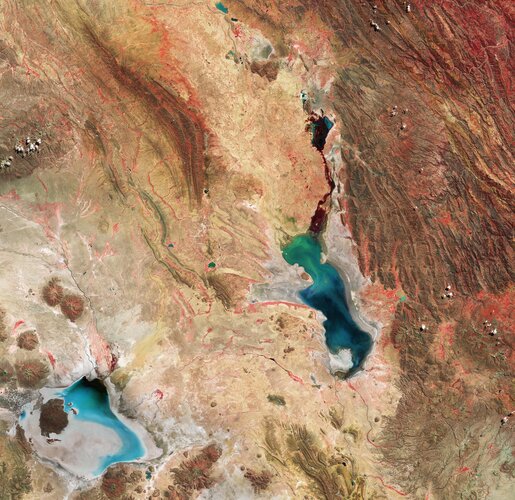 Image:
This Copernicus Sentinel-2 image features salt flats and lakes in southwest Bolivia, near the crest of the Andes Mountains.
Image:
This Copernicus Sentinel-2 image features salt flats and lakes in southwest Bolivia, near the crest of the Andes Mountains.
Přehled dostupnosti WS IS DTM krajů
10.5.2024 9:54 ČÚZK - předpisy a opatření Pro aktuální stav dostupnosti jednotlivých webových služeb produkčních prostředí IS DTM krajů byla zpracována a do záložky Podklady IS DTM vystavena tabulka Přehled dostupnosti WS IS DTM jednotlivých krajůPřehled dostupnosti WS IS DTM krajů
10.5.2024 9:54 ČÚZK - předpisy a opatření Pro aktuální stav dostupnosti jednotlivých webových služeb produkčních prostředí IS DTM krajů byla zpracována a do záložky Podklady IS DTM vystavena tabulka Přehled dostupnosti WS IS DTM jednotlivých krajů17. jednání TPS
10.5.2024 9:46 ČÚZK - předpisy a opatření Dne 12. června 2024 proběhne distančně 17. jednání Technické pracovní skupiny Koordinační rady správců DMVS a DTM.38. jednání KRS DMVS/DTM
10.5.2024 9:45 ČÚZK - předpisy a opatření Dne 29. května 2024 proběhne distančně 38. jednání Koordinační rady správců DMVS a DTM.vrchní referent / rada v oddělení právních vztahů k nemovitostem Katastrálního pracoviště Ústí nad O
10.5.2024 9:41 ČÚZK /Urady/Katastralni-urady/Katastralni-urady/Katastralni-urad-pro-Pardubicky-kraj/Uredni-deska/Oznameni-a-jina-uredni-sdeleni/Volna-mista/DMS/vrchni-referent-rada-v-oddeleni-pravnich-vztahu-k-vrchní referent / rada v oddělení právních vztahů k nemovitostem Katastrálního pracoviště Ústí nad O
10.5.2024 9:41 ČÚZK - volná místa Katastrální úřad pro Pardubický kraj Katastrální pracoviště Ústí nad Orlicí vypisuje výběrové řízení na místo vrchní referent / rada v oddělení právních vztahů k nemovitostem Katastrálního pracoviště Ústí nad Ovrchní referent / rada v oddělení právních vztahů k nemovitostem Katastrálního pracoviště Ústí nad O
10.5.2024 9:41 ČÚZK - předpisy a opatření Katastrální úřad pro Pardubický kraj Katastrální pracoviště Ústí nad Orlicívypisuje výběrové řízení na místo
vrchní referent / rada v oddělení právních vztahů k nemovitostem Katastrálního pracoviště Ústí nad Orlicí
Aktualizace dat KN v mapových aplikacích
10.5.2024 9:10 Jihočeský krajData katastru nemovitostí (DKM, KMD, KM-D) byla v mapových aplikacích a výdejním moduli aktualizována k 1.4.2024.
Mapa roku 2023 – výsledky!
10.5.2024 9:08 GISportal.cz
Na slavnostním vyhlášení výsledků 26. ročníku odborné soutěže České kartografické společnosti bylo z rukou prezidenta ČKS prof. Václava Talhofera předáno pět diplomů a tři zvláštní ocenění Mapa roku 2023. Oceněným gratulujeme! kategorie Atlasy, soubory a edice map: Český úřad zeměměřický a katastrální za Základní topografické mapy České republiky kategorie Samostatná kartografická díla: Kartografie Praha, a. s., za mapu Svět – […]
The post Mapa roku 2023 – výsledky! appeared first on GISportal.cz.



